
 |
Floor Plan |  |
The Dennis Wheatley 'Museum' - Dennis Wheatley's Writing Technique
DW's choice of hero and storyline
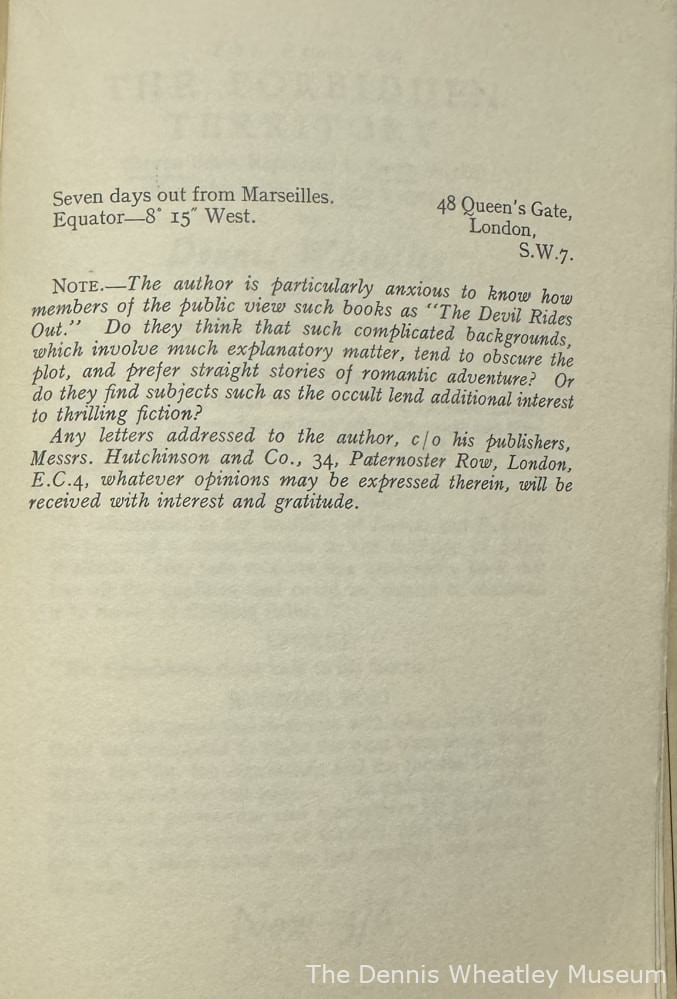
On the final page of 'The Devil Rides Out', DW asks his readers for their opinions of it
Click on the image to enlarge
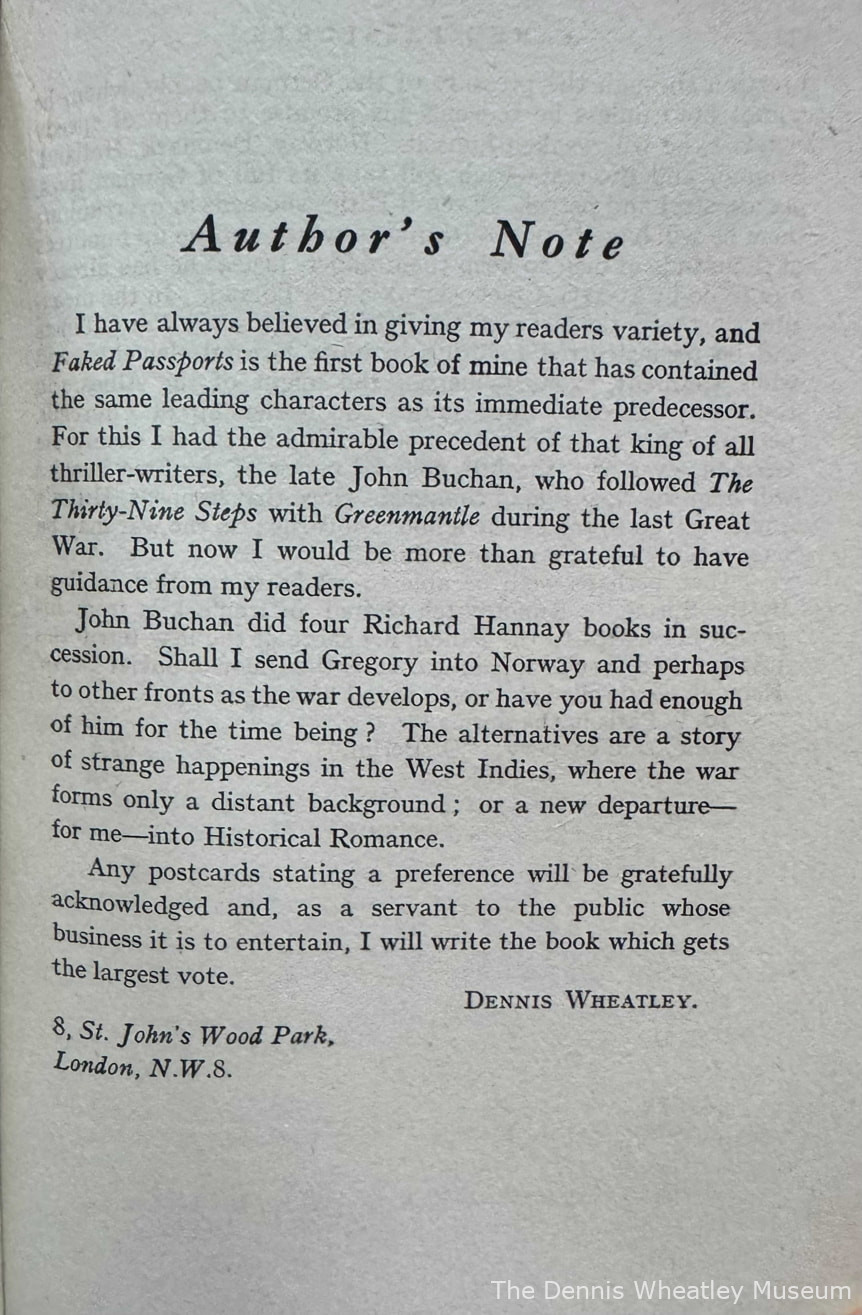
On the final page of 'Faked Passports', DW asks his readers if they would like next another Gregory Sallust war story, or something different
Click on the image to enlarge
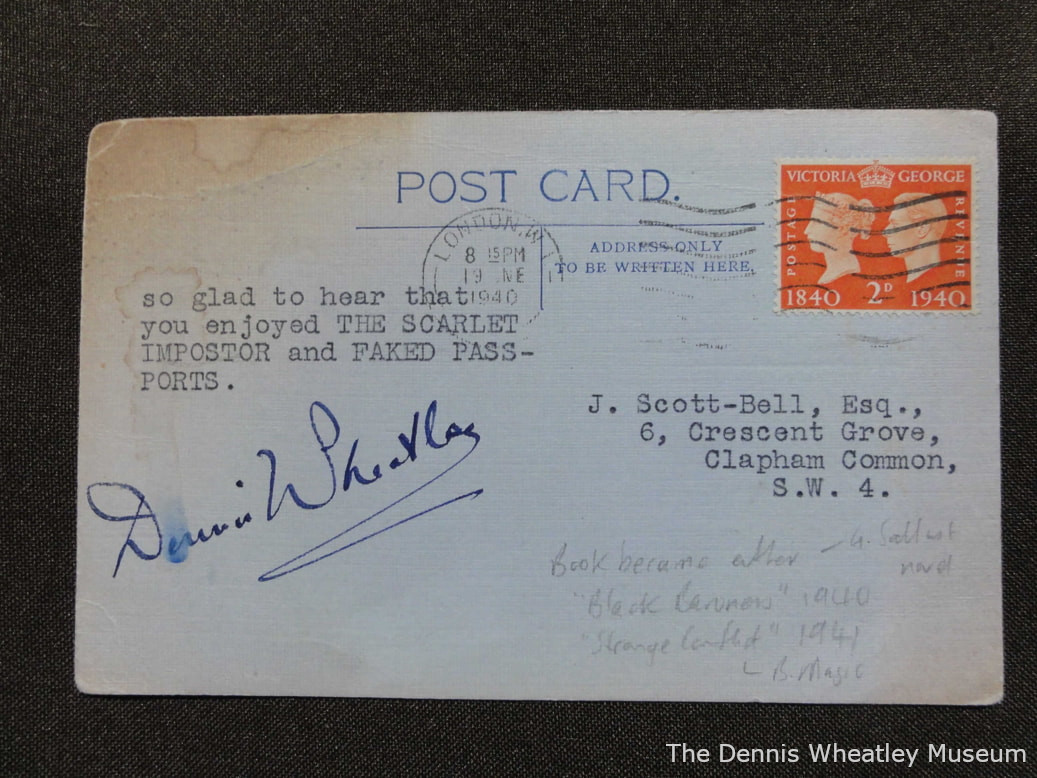
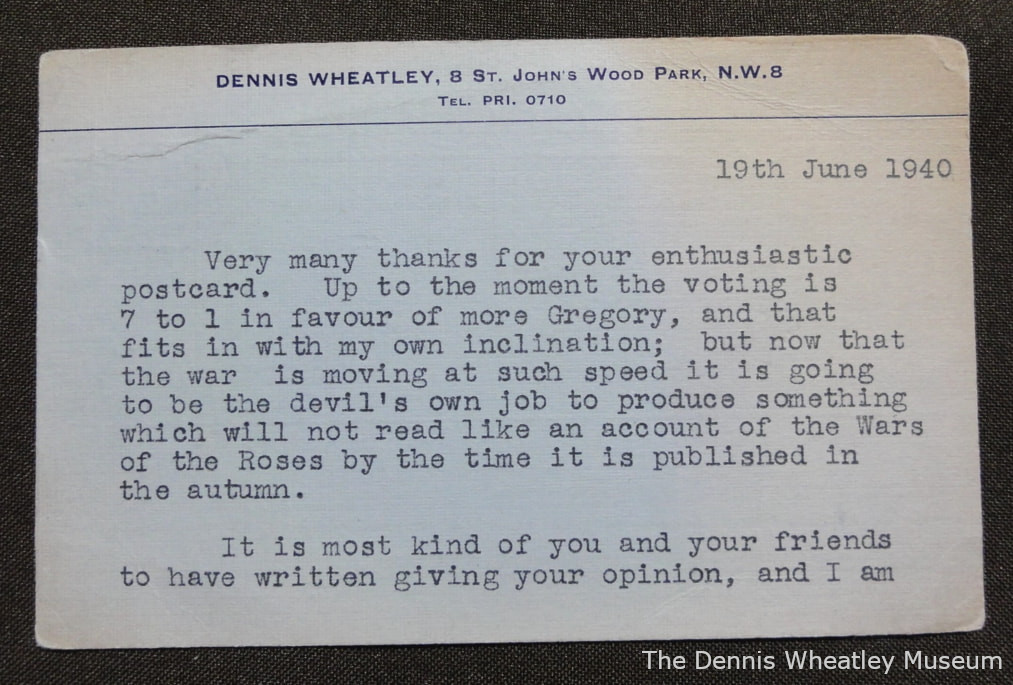
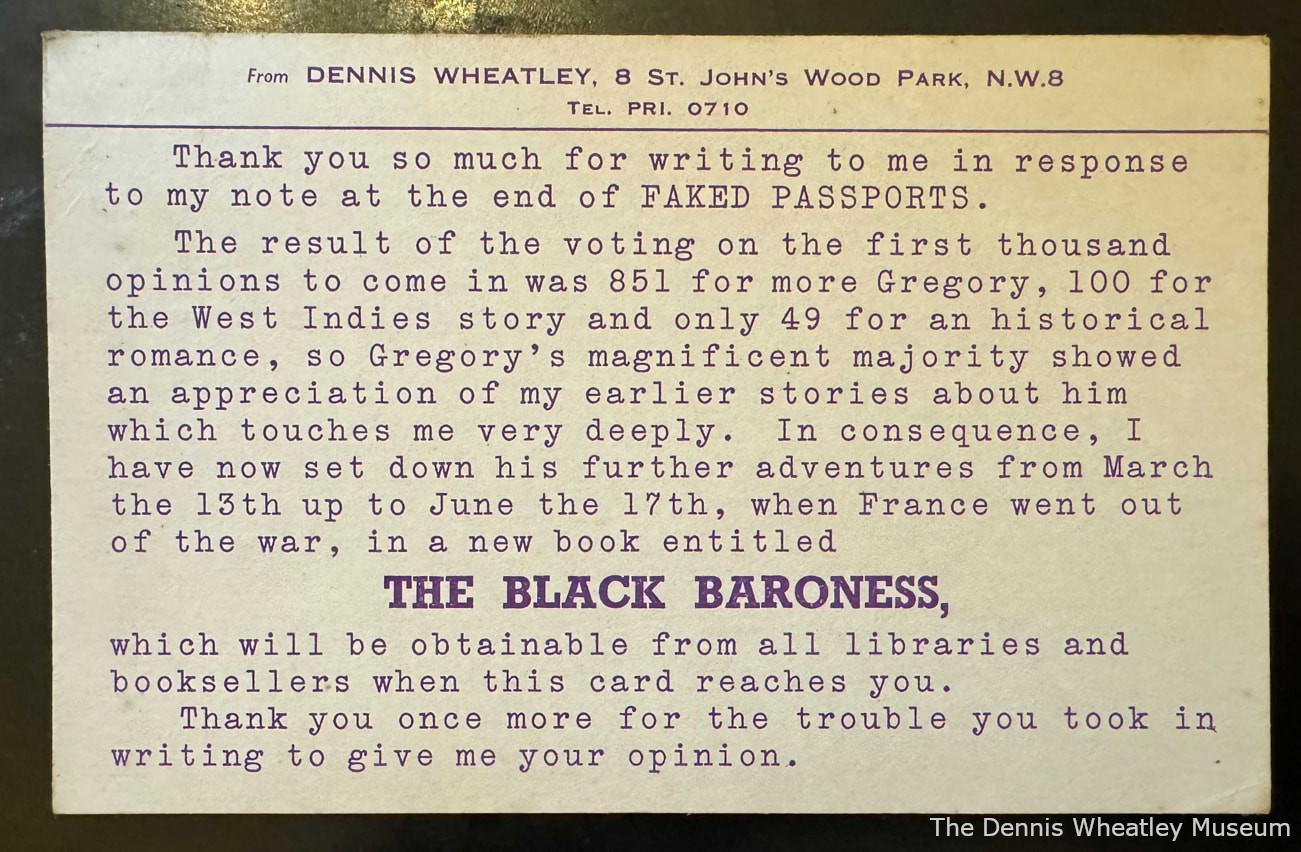
DW sent a postcard to each of his respondents (the earliest ones personalised, the later ones printed), thanking them for writing to him and telling them the results so far.
The public chose another Gregory Sallust story ('The Black Baroness'), and DW followed this up with his story of strange happenings in the West Indies ('Strange Conflict')
Click on the image to enlarge
While young DW, favoured writing adventure stories (his first short adventure story 'The Snake with Diamond Eyes' was written when he was only thirteen, and his first full-length adventure story, 'Julie's Lovers', was written when he was a mere twenty years and serving at the Front in World War One), DW was not however sure that adventure stories were his forte until after he had experimented with short stories and a detective novel. He wrote the detective novel, 'Three Inquisitive People', between November 1931 and February 1932. It was only when DW wrote an adventure novel to follow it ('The Forbidden Territory') using the same characters that he felt completely at home, and from then on his staple was to be the adventure novel.
Having set to writing adventure novels, over time, DW adopted the following broad principles:
- If a character/group of characters proved successful and he enjoyed writing about them, he would turn their adventures into a series.
- Unless there were exceptional circumstances, DW would try not to write consecutive books with the same heroes, in case the public got bored with them.
- Unless there were exceptional circumstances, as with his heroes, DW would try to avoid writing consecutive books with similar themes so as to give his audience variety.
- Unusually for an author, DW would sometimes consult his readers as to what they wanted. Two examples of this (and the feedback DW sent to the respondents to his second request) are shown above.
- Where possible, DW would try to write about things other novelists had not written about recently, or at all (Black Magic being an example of the first, and near contemporary events in World War Two being an example of the second).
- Sometimes (perhaps partly for himself, and perhaps partly for his public) DW would write about subjects completely different to his usual fare (examples being 'Black August', 'Star of Ill Omen', 'The Man who Missed the War' and 'The Strange Story of Linda Lee').
- If for some reason the sales of a particular book disappointed, DW would move on to something else. An example here is the Julian Day series, where DW initially intended to write seven novels, but due to only moderate sales, he only wrote three.
- Beyond the above, as will be seen in a later exhibit, DW would sometimes try something 'completely different', perhaps just to see if he could.
| Provenance: | Private Collections |

